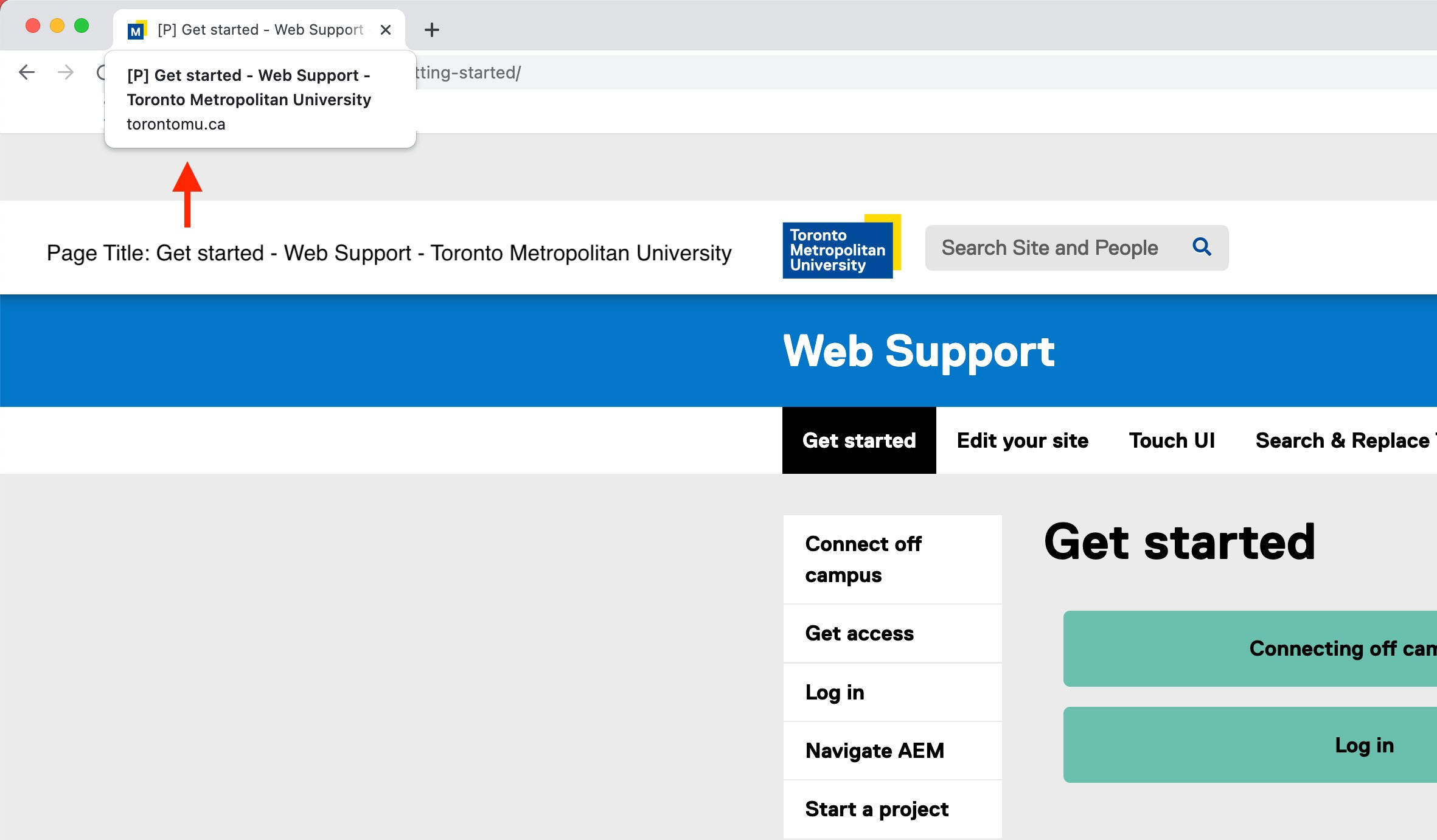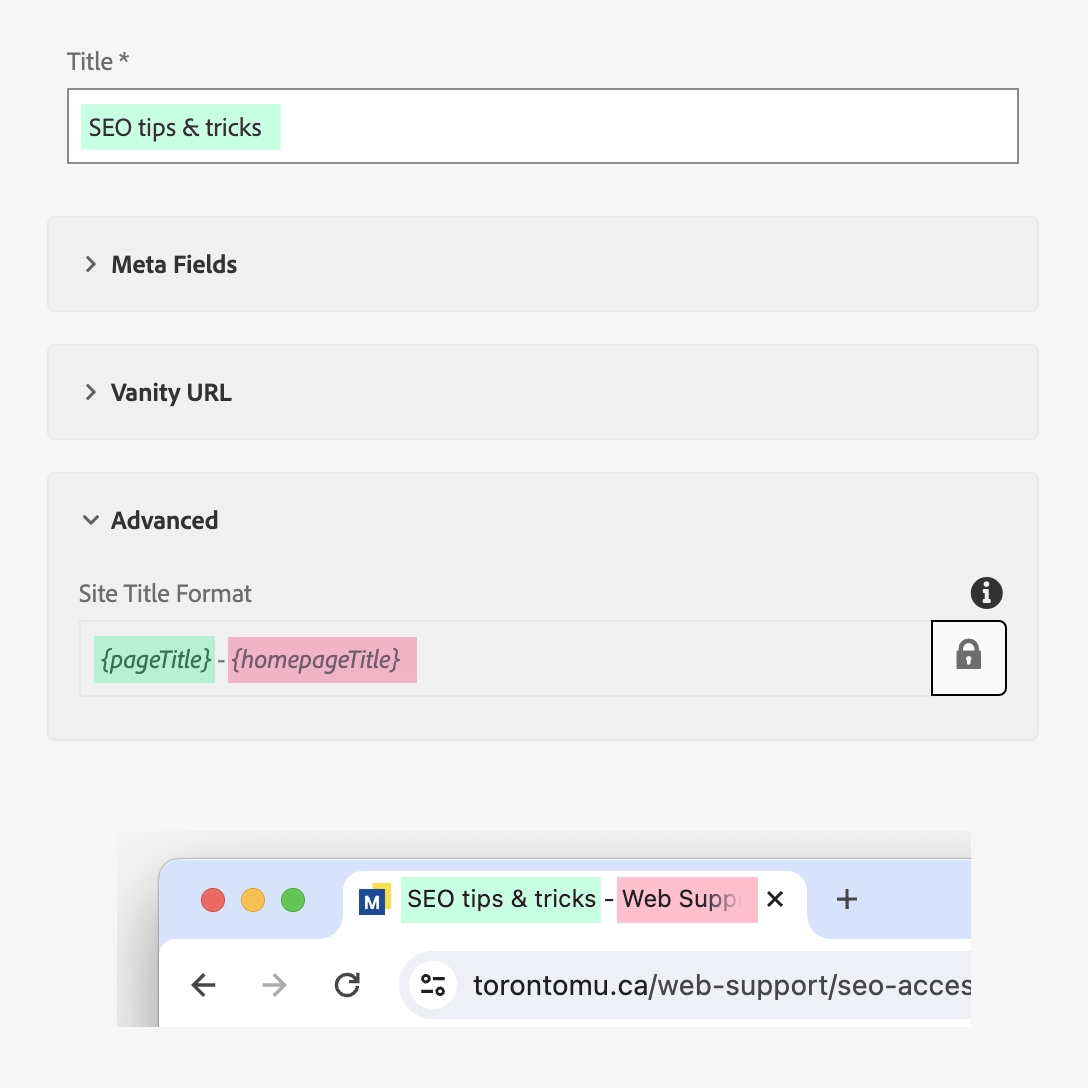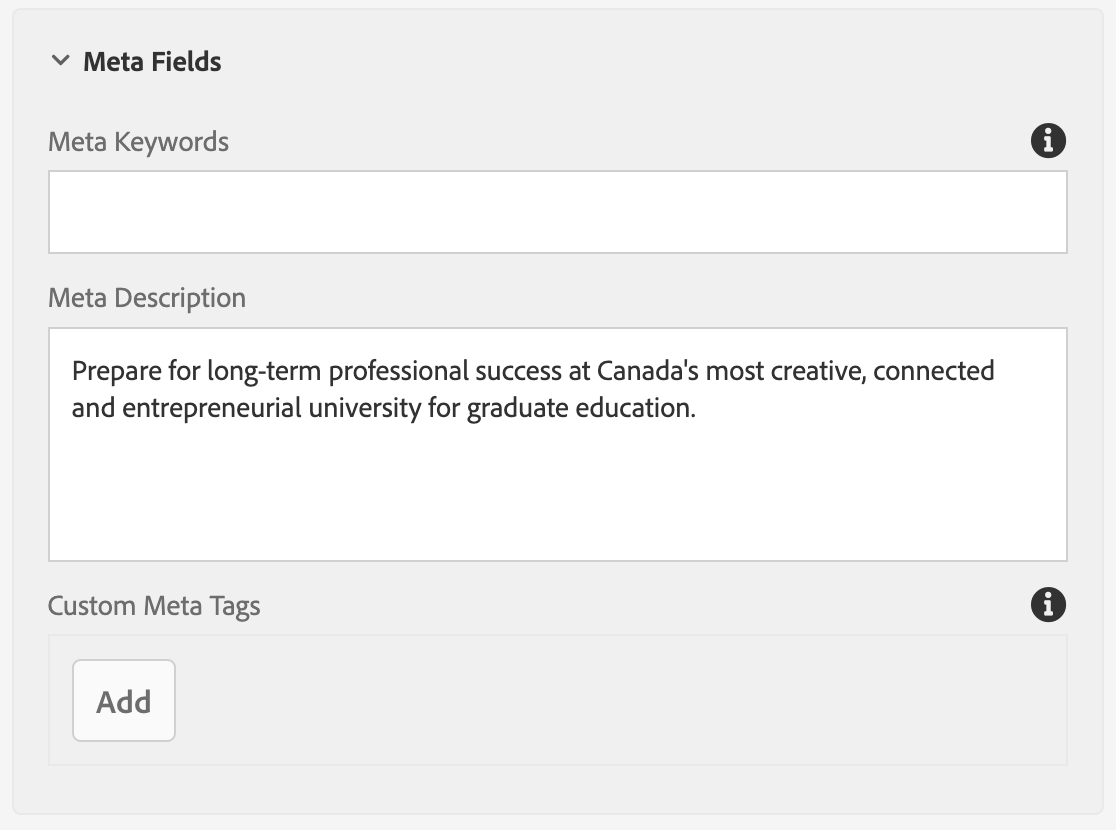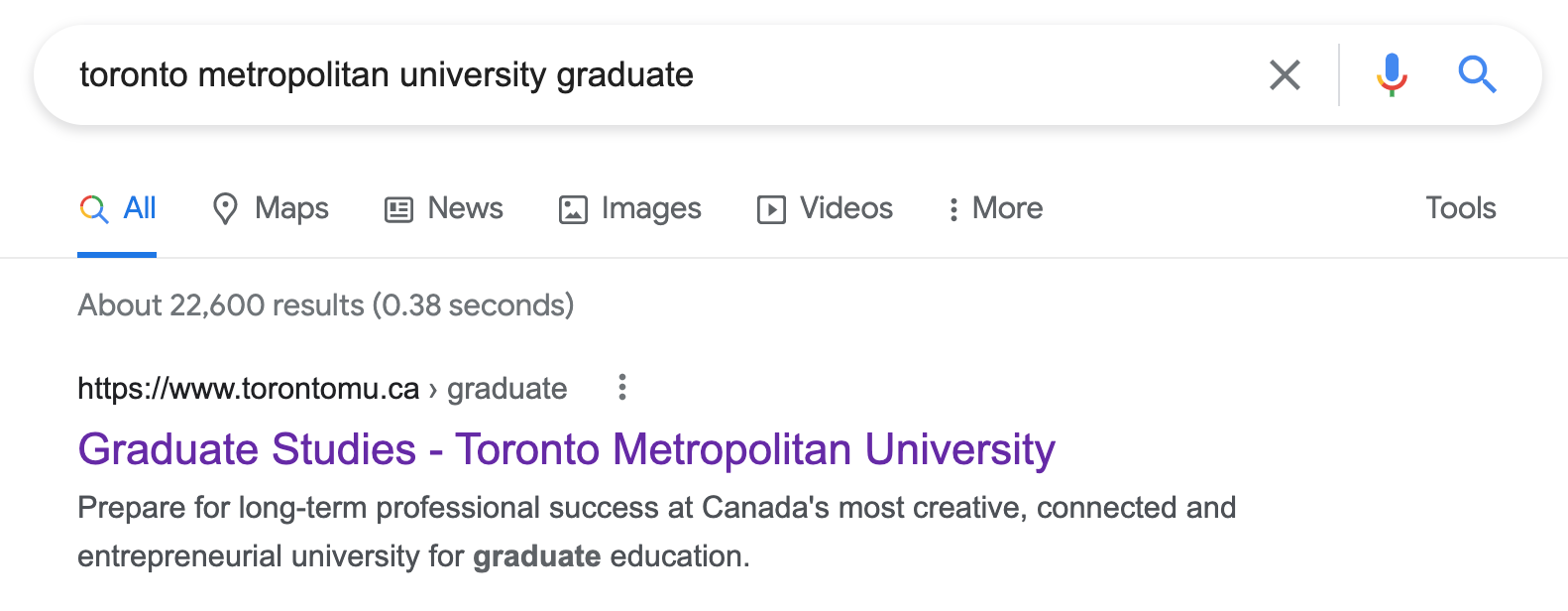SEO tips & tricks
Page titles
A page title, or title tag, is the main text that describes the webpage. It is one of the most important elements of search engine optimization (SEO).
Choosing the right terms for the page title is important as this text appears in browsers and search engine results pages. Additionally, title tags can be used as links when a page is shared on a social media site.
The Page Title text is displayed in the browser tab.

When a new file is created, the Title field becomes your page title, or title tag. The page title also becomes the default Heading 1 on the page.
When you create a new page, adding a Title is the first thing you will do. Give your new page a proper title that reflects the content of the page and does not exceed 60 characters.
Creating good titles at this stage will save you the time of going back and changing them later.
You can modify the default page title in the page properties of your file.
- To go: Page Properties > Advanced > SEO Title Format
- Unlock the SEO Title Format field by clicking on the lock icon.
- Add the page title you want to use for this page.
Notes
- "- Toronto Metropolitan University" is appended to each page title by default. It will always appear near the end of your page title and cannot be modified.
- Modifying the SEO title field will not modify the original value of the Title field, or the page's H1. This can only be done in the Title field of the Page Properties.
- {pageTitle} represents the Title field of every page. If you include this in the format field, the title of the page will appear in the Title tag automatically, in the order you specified in the format field. *
- {homepageTitle} is the Title field of the homepage (root site name). *
*Useful when setting the SEO title format for the entire site.
If you want to set a standard Title tag format for your site, do the following:
- Navigate to your root folder name
- Open Page Properties> Advanced> SEO Title Format
- Unlock the SEO Title Format field by clicking on the lock icon.
- Add the page title format to be used on all pages
The following format: {pageTitle} - {homepageTitle} will result in this example page title: University award recipients announced - News and Events - Toronto Metropolitan University
Notes
- "- Toronto Metropolitan University" is appended to each page title by default. It will always appear near the end of your page title and cannot be modified.
- Modifying the SEO title field will not modify the original value of the Title field, or the page's H1. This can only be done in the Title field of the Page Properties.
- {pageTitle} represents the Title field of every page. If you include this in the format field, the title of the page will appear in the Title tag automatically, in the order you specified in the format field.
- {homepageTitle} is the Title field of the homepage (root site name).
- Do not use commas to separate text.
Set the SEO Title Format for all pages on your site by adding the format in the Page Properties of your homepage (root name).

Meta description
A meta description is a short description or summary you manually add to a page. This summary tells both the reader and search engine what the page is about. This summary is generally displayed in the search results when you search for a keyword on Google or Bing.
A good meta description with the right keywords will help people find and click on your page! A meta description should:
- Be no more than 1 to 2 sentences.
- Concisely summarize the page and match the content.
- Use proper spelling and punctuation.
- Be unique and include some keywords from the content.
- Include a call-to-action if necessary.
The Meta Description field is found in Page Properties. The page properties dialog allows a user to edit and add meta information associated with the page.

The meta description should display in search engine results after some time. If it doesn't appear, in some cases the search engine might automatically generate one.

Meta images (Open Graph)
Open Graph (external link) images are pictures that show up when you share a link on social media or communication platforms like Google Chat or Slack. Open graph images make links more attractive and may help increase engagement.
In AEM, the first image on the page is automatically set as the Open Graph image. You can override the image in Page Properties under the "Image" tab by selecting a specific image from the DAM.
In most cases, it may not be necessary to specify an Open Graph image if your web page has good imagery. Consider using this tool for generating TMU branded Open Graph images (external link) :
- If your web page has no images.
- If your web page has an Open Graph image that doesn't look good when shared on social media.
- If you expect your web page to be shared widely.
This is an example of an Open Graph image preview when this webpage is shared on Google Chat. The image appears automatically when you paste a URL.
